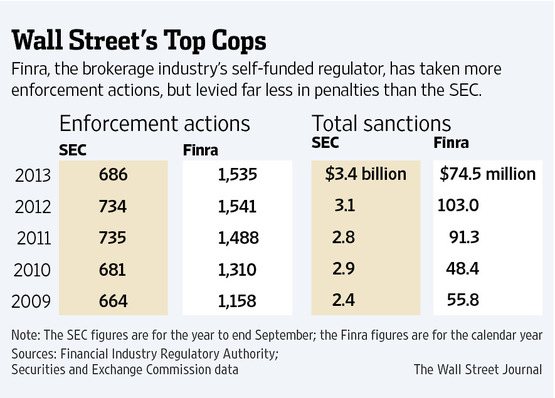
Krishnan Ranganathan, in his recent article published at TabbForum.com on 18 June, 2014, remarkably delineates the trends of investment banking in 2014. He astonished the readers by comparing predictions and realities of debt capital markets, equity capital markets, mergers and acquisitions, and syndicate loans from first five months of 2014.
The future of investment banking was a hotly contested point at the beginning of the New Year. How have industry predictions fared in the first five months of 2014?
Six months ago, around the beginning of the New Year, an onslaught of publications, opinions, views and surveys (what I call “fiction” here for argument’s sake) emerged on what could be in store for banks in 2014. A highly debated area was the future of investment banking (IB), where the outlook was starkly divided. This article summarizes the key predictions from a gamut of such reports and attempts to decode the predictions vis-à-vis the results in the first five months of 2014.
IB revenue is taken as an aggregate of Debt Capital Markets (DCM), Equity Capital Markets (ECM), Syndicated Loans, and Mergers and Acquisitions (M&A).
Debt Capital Markets (DCM):
Prediction: Bond deal activity is expected to rise significantly, which would represent an all-time record year for bonds. EMEA and Asia are likely to be more bullish on bonds. Some also felt that with the Fed tightening its monetary policy, we can expect rising interest rates on corporate debt in 2014. Refinancing is likely to drive growth in debt issuance.
Reality: Fixed income (FI) continues to play second fiddle to equities, thus triggering investments out of FI. Also, issuer activity is seeing lukewarm interest due to additional Fed tapering and ascending interest rates.
- Global Supranational, Sovereign, Agency (SSA) volume has shown a decrease of 16% on 2013 YTD and represent the lowest total since 2007 YTD. A mere 2,620 deals have come to market thus far in 2014, the lowest level since 2000 YTD.
- Global covered bond activity in 2014 stands at its lowest level since 1996.
- However, the global PIK (Payment In Kind) bond market seems to have done decent business, with the volume, $4.2bn, the highest since 2007.
Verdict: Off track.
Equity Capital Markets (ECM):
Prediction: Resurgent IPO activity is widely believed to continue, especially in the US, where companies may be expected to use share offerings to fund growth. Admittedly, some shareholders are likely to be more resistant to dilutive follow-on deals as compared to Asia or Europe. While in Asia, share prices and the regulatory environment are seen as favorable to new issuances, in Europe, there is a need for liquidity coupled with shareholders’ interest in secondary offerings. Some experts believe weak valuations and shareholder resistance may lead to recapitalizations in the form of asset sales rather than share offerings.
Reality: Based on the most recent 2014 data, ECM came back with a bang last year after successive declines and is continuing to do well, with many issuers clearing their backlog in the light of improved economic conditions.
- EMEA acquisition-related ECM volume is the highest YTD volume since 2009, with the IPO volume at the highest YTD level since 2007.
- EMEA Financial Sponsor (FS)-related IPO volume is the highest YTD volume on record.
- US-listed first follow-on volume is at the highest level since 2000 YTD, while the US-listed Chinese issuer cross-border ECM volume has already seen 16 deals and is the highest YTD volume on record.
Verdict: Somewhat On Track
Mergers and Acquisitions (M&A):
Prediction: Large cash reserves/commitments, opportunities in emerging markets and availability of credit in favorable terms are likely to improve deal sentiments in 2014. Improved consumer confidence and booming equity markets are the proverbial icing on the cake. The most active industries driving M&A are expected to be media, telecom and technology, followed by Pharma, healthcare and life sciences. The healthcare sector sees heavy pressure to spend and match competitors despite valuations acting as an impediment (while industry regulation is less of a catalyst). Energy, Power & Commodities are likely to remain lackluster, plagued by cost-cutting and non-core asset divestitures as well as their vested interest in building cash cushion.
Reality: While 2013 saw risks attributable to macro-economic parameters holding center stage and squeeze in fees on account of lower margins for bigger deals, the first few months in 2014 have seen a good degree of deals being announced, particularly from Private Equity players and corporates hoarding substantial cash buffers.
- Global $10bn+ M&A volume (with 13 deals till now, the majority in Telecom and Healthcare, and the US taking the lion’s share) has seen a 75% increase compared to the same period last year and is the highest YTD volume since the last seven years in this category.
- Global hostile M&A volume is up significantly and is at the highest YTD level since 2007. Asia Pacific-targeted Financial Sponsor (FS) M&A volume, driven largely by China, is at the highest YTD level on record and is nearly twice as high as in last year.
- US Outbound M&A volume, with 555 deals, has reached the highest YTD level on record.
- Global Technology sector M&A volume is up 94% compared to last year and is the highest since 2000 YTD.
Verdict: On track
Syndicated Loans:
Prediction: Market observers and survey respondents believe that syndicated loan deal activity will rise significantly, leading to a best year for loans since 2007. In the US, loan growth is widely expected to outpace bond growth because of a perceived investor shift toward floating-rate assets.
Reality:
- The average US-marketed syndicated loan margin is witnessing a fifth consecutive year-on-year decrease and is the lowest average margin since 2008 YTD. On the contrary, AeJ (Asia excluding Japan) G3 syndicated loan volume is at the highest YTD level since 2008.
- Global second- and third-lien average loan pricing is at the lowest level since 2008 YTD. Leveraged loans account for 51% of European leveraged finance (leveraged loans and high-yield bonds) in 2014; YTD is down from a 65% share in 2013 YTD and the lowest YTD share on record.
- However, volume for global amend & extend (A&E) loan facilities in 2014 YTD totals a record high and marks the fifth consecutive YTD increase in volume.
Verdict: Off track
Conclusion:
Interestingly, most of the banking surveys seem to have been off the mark by a mile (at least in the first 5 months, with only M&A bucking the trend). I would stick my neck out and bet on M&A deals (again contrary to the majority view and skewing the “verdict” hopelessly!) ranking low on numbers while high on shareholder value. The recent Pfizer-Astra Zeneca episode is a case-in-point where companies are being extremely selective whilst working with a longer list of economic and industry parameters.



